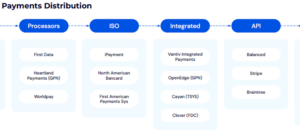President Biden called last week for an urgent, government-wide focus from the U.S. into the research of a potential Central Bank Digital Currency (CBDC) in an Executive Order. It’s a move that’s been a long time coming—American efforts in the space have lagged far behind some other countries, including China, which has already launched a pilot for its own digital yuan.
Discussion on what shape that research may take – and whether it’s beneficial for the U.S. to seriously take a look at investing in a digital dollar – was the subject of last week’s meeting of the Chicago Payments Forum. Such a move could be considered in the subject of national interest, as it’s a way to combat what many in government see as the central issue with cryptocurrencies – a lack of control.
“If there are trillions of dollars tied up in some currency that the Federal Reserve can’t control in any way, they can’t raise an interest rate, they can’t control the money supply. Their ability to ensure financial stability becomes more difficult,” said Peter Tapling, managing director of PTap Advisory and member of the U.S. Faster Payments Council Board Advisory Group.
And it’s not just an issue for the U.S. and the Federal Reserve; it’s a global issue because cryptocurrency fundamentally knows no borders.
“That’s kind of a trigger point for central banks globally. They see the potential for huge amounts of value to be exchanged digitally, and they really want that value to be something in an asset that gives them visibility and control,” Tapling said.
As a topic, however, there’s still a lot of work to be done – while strides have been made in recent months by the government on the subject of digital currencies, it’s almost exclusively been regulatory talk. That’s important but doesn’t answer some of the fundamentals – like what, once and for all, digital currency is in the first place. Is it a commodity? A security? Something else?
And that’s before even starting to think about all the other fundamental questions raised by the prospect of a digital shift for the dollar – and they’re important ones.
“The recently released Federal Reserve Board policy paper raised the issue of whether or not a central bank digital currency would earn interest,” Tapling said. “And I think that discussion clouds the issue. If a CBDC is a true currency, you don’t give interest. The central bank doesn’t give interest on the U.S. dollar; the dollar bills sitting in my pocket earn no interest. So why would a CBDC provide interest? Stablecoins may issue interest when the stablecoin is built to look like a money market fund financial product.”
While research remains very much preliminary, it’s not uncharted territory – the Federal Reserve Bank of Boston, in conjunction with the MIT Digital Currency Institute, released a technology paper just last month discussing their research findings on the topic. Their findings suggest that the interest is there, and the benefits could be significant:
“A CBDC can provide functionality that is not currently possible with either cash or bank accounts. For example, a CBDC could support cryptographic proofs of payment, more complex transfers to or from multiple sources of funds, and flexible forms of authorization to spend, such as varying transaction limits.”
Beyond these fundamentals, though, much work will still have to be done before anything like this could become more than theoretical talk for government working groups. The Federal Reserve has no structure under its current mandate to issue a digital currency that can be held by individual consumers – changing that would almost certainly require an act of Congress.
“It’s impossible for the technology people to start building anything until the policy people decide what should be built,” Tapling said. “So it’s good that they’re building pilots. To the credit of the Boston Fed, they have taken the code that they have built and published in an open Github project. Anybody could download it and try it out.”
- ant financial
- Banking
- blockchain
- blockchain conference fintech
- CBDC
- chime fintech
- coinbase
- coingenius
- crypto conference fintech
- cryptocurrency
- Cryptofinance
- fintech
- fintech app
- fintech innovation
- Fintech Rising
- Innovation
- OpenSea
- PayPal
- paytech
- payway
- plato
- plato ai
- Plato Data Intelligence
- PlatoData
- platogaming
- razorpay
- Regulation
- Revolut
- Ripple
- square fintech
- stripe
- Technology
- tencent fintech
- xero
- zephyrnet









